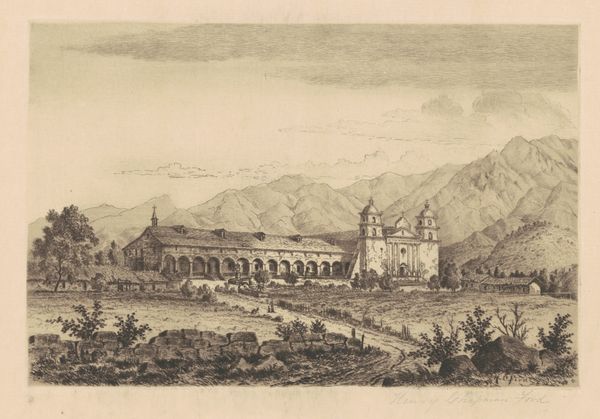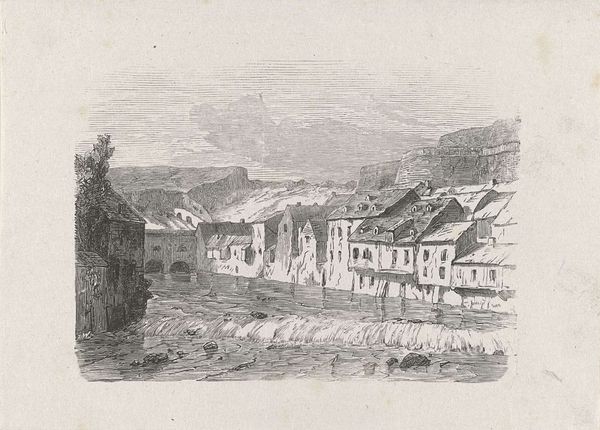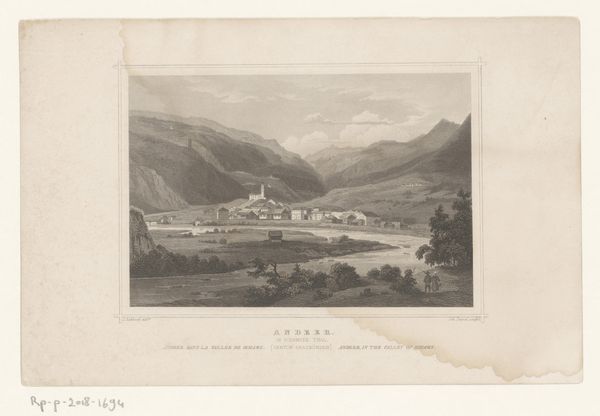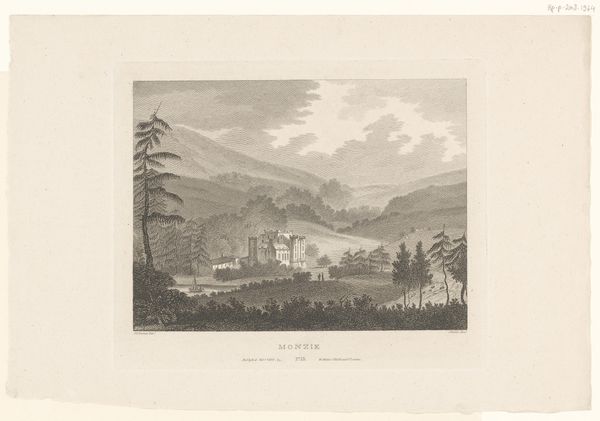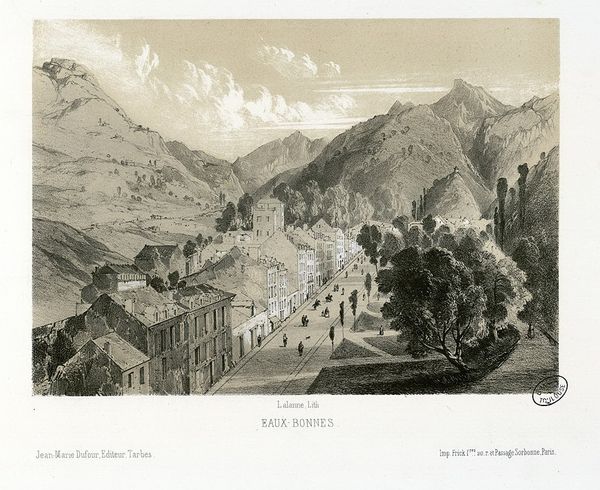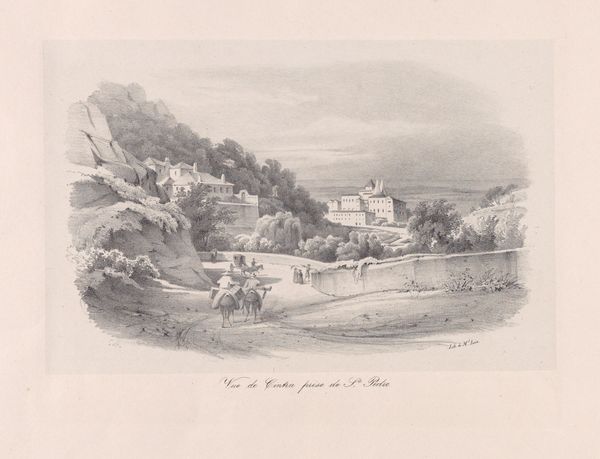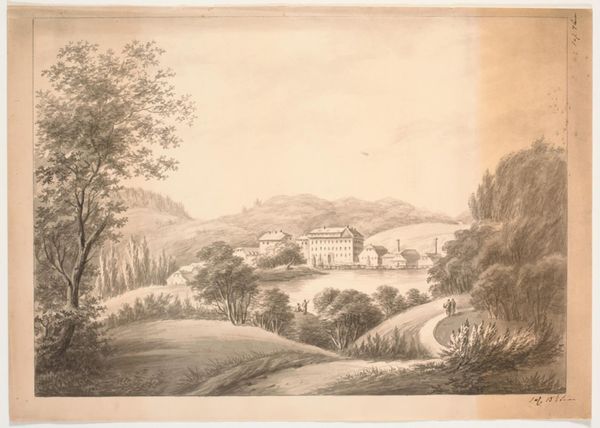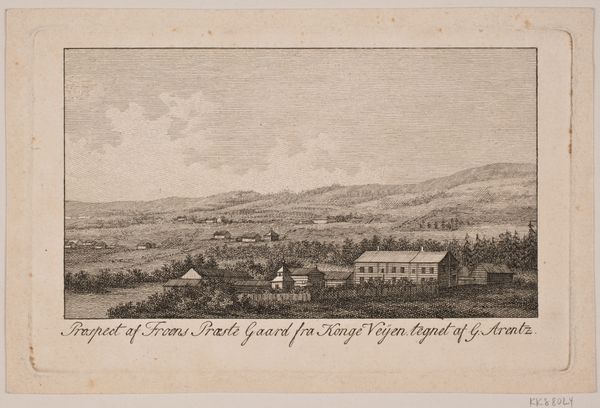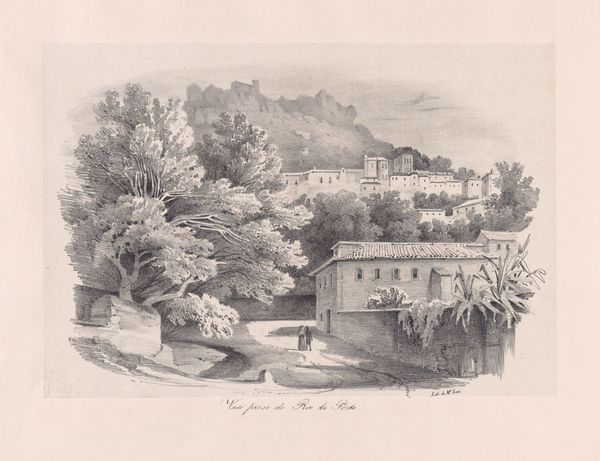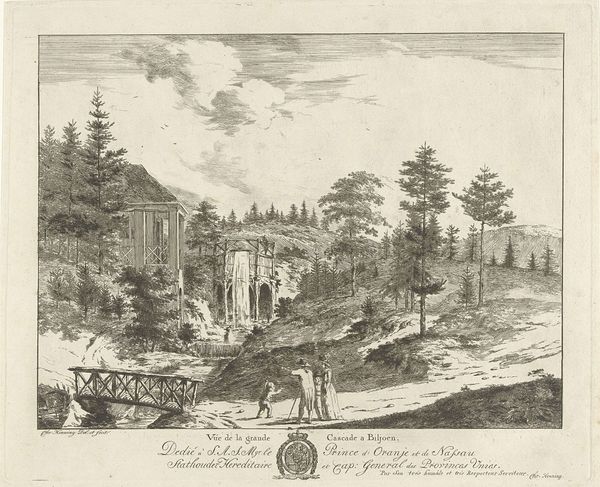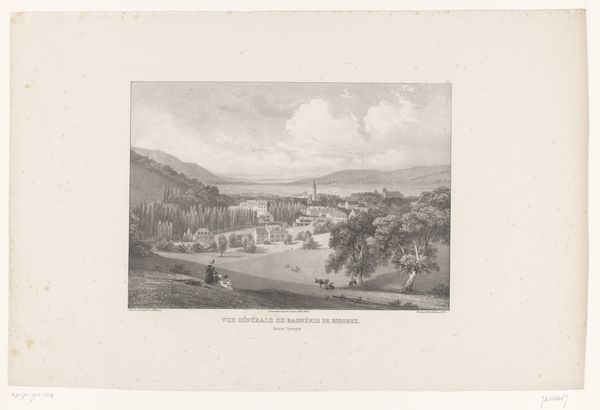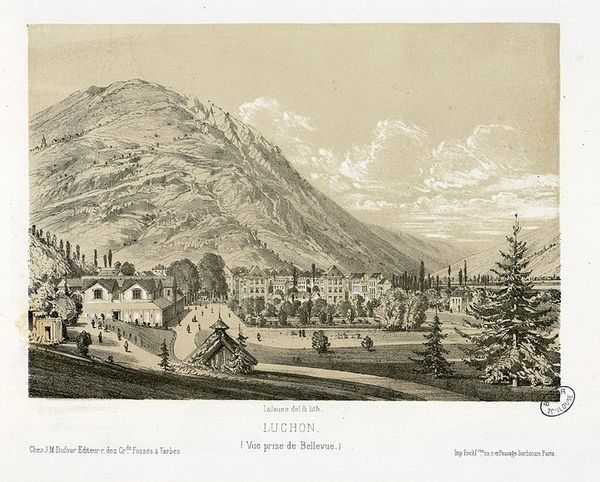
print, etching, engraving
#
dutch-golden-age
# print
#
etching
#
landscape
#
river
#
mountain
#
cityscape
#
pencil work
#
engraving
Dimensions: height 141 mm, width 183 mm
Copyright: Rijks Museum: Open Domain
Editor: Here we have Isaac Weissenbruch’s "Rivierlandschap met een dorp in de bergen," a river landscape with a village in the mountains, etched sometime between 1836 and 1912. The composition is quite detailed, even meticulous. It feels very much of a time and place. What do you see in this piece from a historical perspective? Curator: I see a carefully constructed image intended for a public consuming landscape prints. Consider the rise of the middle class in the 19th century. They craved representations of picturesque scenes, both familiar and slightly exotic. These prints became a form of cultural currency, demonstrating taste and social awareness. Editor: So, it was less about accurately depicting a specific location and more about creating a desirable image? Curator: Precisely! The 'Dutch Golden Age' style label highlights this connection. Think about the visual language deployed here – the careful arrangement of buildings, the implied narrative of villagers going about their lives. Do you think this idyllic portrayal reflects the social realities of the time? Or is it a deliberate construction? Editor: I’d say construction. There's a sense of...tidiness...that feels idealized, almost like a stage set. A critique, maybe, or just pure aesthetic marketing? Curator: Perhaps both. This artist operated within a specific art market driven by particular socio-economic forces. Considering the dates of the etching, how might industrialization influenced Weissenbruch’s choice of subject and its idealised rendering? How does it function in Dutch national identity? Editor: Good point. Looking at it that way changes my understanding. It feels like it's prompting the viewers, then and now, to consider what kind of community or environment is 'ideal'. Thanks for helping me contextualize it better. Curator: It’s through questioning such artistic intentions and social functions that the work opens itself to richer interpretations. These landscapes reflect not just a place, but an idea, a societal value projected onto the land.
Comments
No comments
Be the first to comment and join the conversation on the ultimate creative platform.
